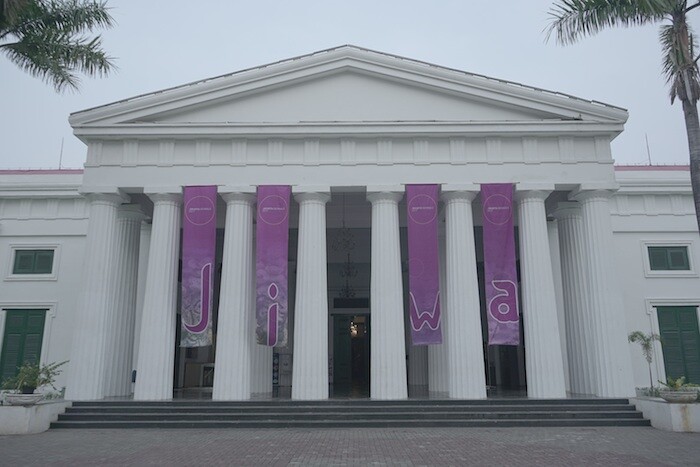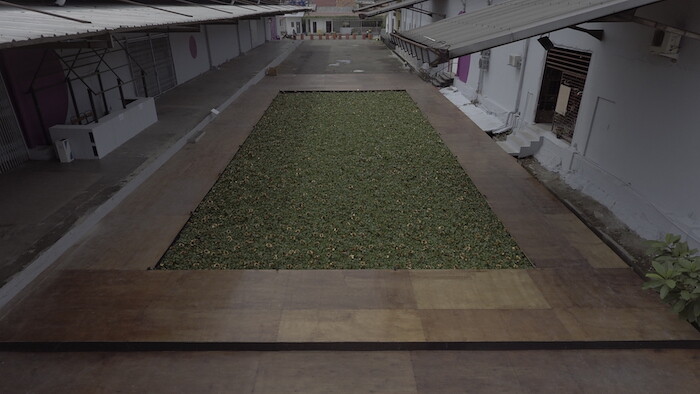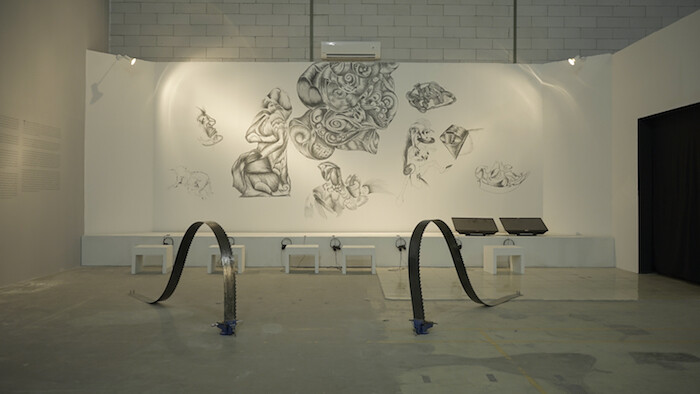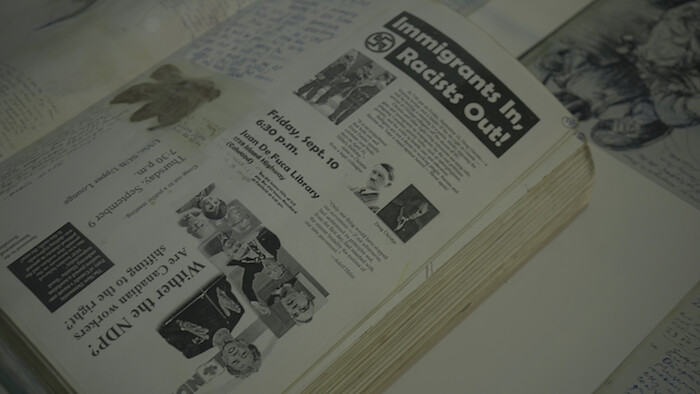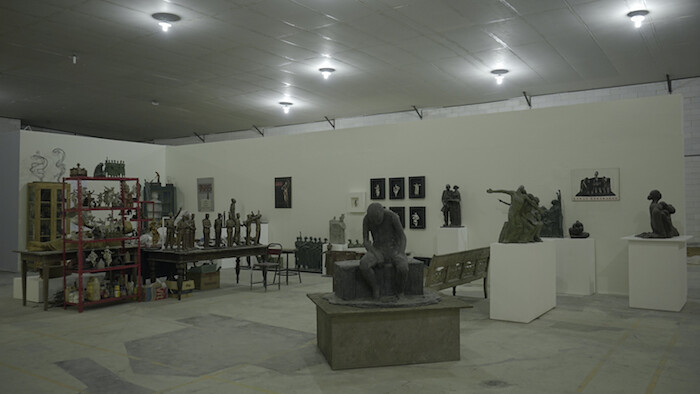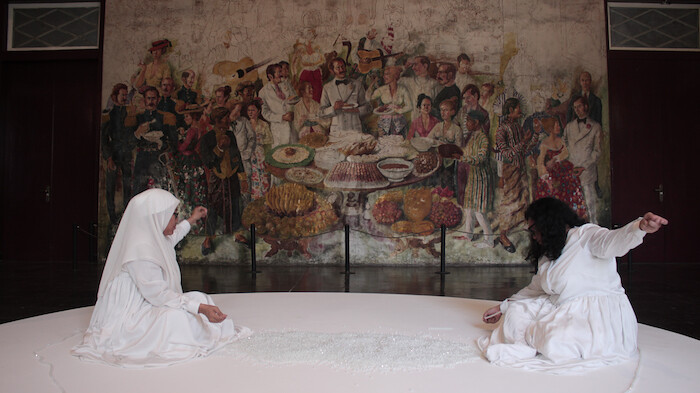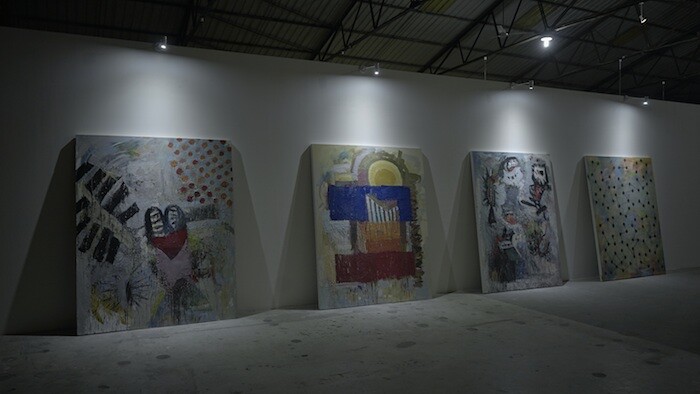The 2017 edition of the Jakarta Biennale proposes a soulful understanding of Indonesia, in which “jiwa” reigns. Jiwa is a pre-Islamic, polytheistic, and specifically Indonesian concept that signifies a way of living in which thinking and feeling go hand-in-hand, and of living in harmony with nature and with one another. (For clarification on the idea, I was told that Indonesia’s neighbor Singapore has no jiwa: sorry, Singapore!) It might be helpful also to think of what jiwa is defined against: a variety of forces that have threatened to claim Indonesia, such as Dutch colonialism, Suharto, American-style capitalism, Islamification, and nationalism.
Jiwa thus activates a particular social and political background, which the exhibition grounds further with a historical focus. The show’s artistic director, Melati Suryodarmo, and her team Annissa Gultom, Hendro Wiyanto, Philippe Pirotte, and Vít Havránek, returned to the Indonesian generation that emerged in the mid-1970s. This was the moment when a group of artists in Jakarta rebelled against the academicism of the Second Jakarta Painting Biennale of 1974 and instead linked themselves with anti-Suharto activism. For Eceng Gondok Berbungan Emas (Water Hyacinth with a Golden Rose, 1979/2017), Siti Adiyati, for instance, made an artificial pond in the wide gulley between the main venue’s two warehouse spaces. Water itself is barely to be seen. so carpeted is the pond with bright green hyacinths, out of whose dense network metallic roses crane upwards—or, rather, cheap plastic roses that she has spray-painted gold. It’s beautiful, both in itself and as a canny staging of platitudes of beauty. The work recreates a 1979 piece that used its looks as critique: in the late 1970s General Suharto announced an environmental improvement policy of making Indonesia “green,” but the introduction of a water hyacinth only served to choke the rivers and undermine native plant species. The biennial’s second iteration of this work is both an homage to a persistent spirit of activism in Indonesian art, and an attempt to bring back certain figures into the history of Southeast Asian art, where they are at risk of being forgotten.
Art-historical responsibility was addressed self-consciously by separated sections in the main venue, devoted to four Indonesian artists of a previous generation (not all of them anti-Suharto activists): the sound artist I Wayan Sadra, the sculptor Hendrawan Riyanto, the painter and activist Semsar Siahaan, and sculptor and activist Dolorosa Sinaga. These presentations set the key in which many of the other works would ring out: art’s potential to disrupt received narratives. Sinaga’s small-scale sculptures of the female form, which she has made over the past four decades, were presented within a mocked-up studio site in the main venue. She also showed a fleet of human-scale statues of Sukarno, still largely a national hero, in the popular, colonialist-era Fatahillah Square, whose Neo-classicist buildings served as the biennial’s second venue. While the first president of Indonesia and leader of its independence movement from the Netherlands is usually shown as placid and reserved, video footage of him attests to an expressive man, with signature dynamic gesticulations. Sinaga used these gestures for her statues: a return of Sukarno, his mission perhaps not accomplished, into a square that still hosts a Café Batavia—the old Dutch name for Indonesia.
Many of the works in the museums surrounding Fatahillah Square (the Jakarta History Museum and the Museum of Fine Arts and Ceramics) specifically tackled colonialism: Mathieu Kleyebe Abonnenc’s video Sector IX B, Sleeping Sickness Prophylaxis (2015) concerns a French delegation sent to Senegal in the 1930s to make a cultural map of the country. The objects they amassed become the source of a psychedelic narration in Abonnenc’s work, which takes place mainly in the IFAN Museum of African Arts in Dakar and the Musée de l’Homme in Paris, in search of the memory they hold. The Indonesian artist Ratu Rizkitasari Saraswati, in the performance Meronce (Beading, 2017), threaded string through small glass beads, accompanied by her mother or sister, in a ritualistic re-staging of an activity often performed as a learning tool by schoolchildren in the country. The performance was significant for its content as well its context: the room around the two figures is decorated with a partially completed, thoroughly insipid mural showing Dutch colonialists eating satay; it was reportedly left unfinished when the Dutch realized the humidity would inevitably cause the mural to decay. The Cameroonian artist Em’kal Eyongakpa turned to the prisons in the caves under the History Museum with the sound piece Untitled thirty-seven (sǒ bàtú) (2017), comprised of heartbeats and excerpts from black liberation figures such as Amílcar Cabral, Chinua Achebe, and Haile Gerima.
In the biennial’s main warehouse space, a number of works investigated indigenous systems of knowledge, a current that also ran through the Sharjah Biennial 13 and Documenta 14 (both 2017). As with these two exhibitions, this was yet another attempt at challenging a failing western social and temporal order, refusing the idea of a chronology of advancement. Here again, many works depicted a mingling of times and geographies. David Gheron Tretiakoff’s three-channel video installation Ceremony (2017) shows, on the first screen, a French-Moroccan woman sparked into a trance by a performance of Moroccan Gnawa music on the Paris streets; the second channel provides the soundtrack for the work and portrays a French woman of Inuit ancestry who discovers she can perform Inuit throat singing. The third channel shows a group of men in western Egypt killing a bull, an ancient rite that, in this area, has been incorporated into contemporary Islam as a ritual performed at the end of Ramadan.
Taken together, the works invoke and dethrone essentialism: the conception that people carry ancestral memory within them sits alongside its converse, that all “native” rituals are at one point constructed or converted. The Czech artists Alexey Klyuykov and Vasil Artamonov take up this idea with regard to Soviet socialist realism, presenting a group of paintings, such as the dear, matter-of-fact Bread (2012), that mimic ostalgie as an idiom: an ironic take on an already ironic-nostalgic take. A similar questioning of originality is evidenced by the expressive paintings of Gede Mahendra Yasa, a Balinese artist who was part of a movement called Neo Pita-Maha, a reworking of the original Balinese Pita-Maha movement of the 1930s that these artists saw as a commercialization of Balinese identity. In the later instantiation, Mahendra Yasa and others sought to reflect upon a culturally constructed style in order to locate their own means of articulation.
The to-and-fro between international clichés and national representation was further explored in an exhibition on the history of Indonesian art curated across town by Charles Esche and Agung Hujatnika for the privately-run Museum MACAN—Jakarta’s first high-spec, international institution—that opened alongside the biennial. (The museum comprises the collector Haryanto Adikoesoemo’s holdings of modern and contemporary Indonesian and European work, and Esche and Hujatnika’s exhibition was drawn from this collection.) The curators show how Indonesian art has always reflected social change: from its early importing of European painterly idioms to the struggles between abstraction and realism that the curators argue mirrored Indonesia’s place in the Non-Aligned Movement in the 1950s and 60s, poised between US and Soviet influence. Esche and Hujatnika also included an archival display of “Exhibition Histories” material, drawing the first few lines of the history of art’s interaction with the public in Indonesia.
At the biennial, the archival displays that accompanied some of the subjects were a reminder of the high stakes of history in Indonesia: the sheer terror and paranoia, for instance, demonstrated by the twisted faces the artist and anti-Suharto activist Semsar Siahaan etched out in pen in his diaries, which he wrote in Cyrillic script in order to evade detection by the authorities. Overlooking these displays is his painting Transfusi (Transfusion, 1987) in which a woman breastfeeds a baby, entangled in barbed wire, who is receiving a blood transfusion. The events of Suharto’s rule are being more openly addressed, and the recreation and return to the moment of artistic critique against the despot felt grounded in both the past and present. This is an elaborately conceived biennial, and at times one wished for more documentation of the past—as well as for a longer duration, given its relevance to the Indonesian public (the biennial is only six weeks long). But its ambition feels warranted by history.
